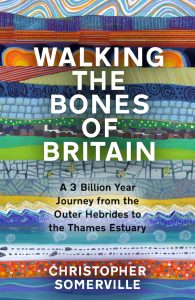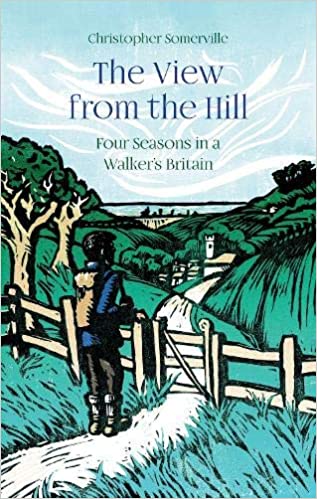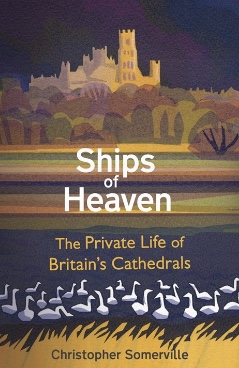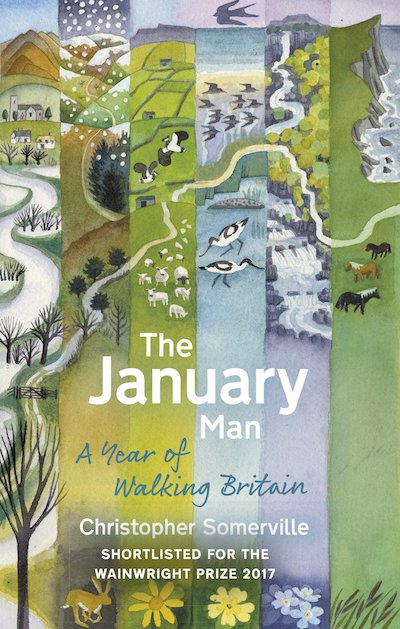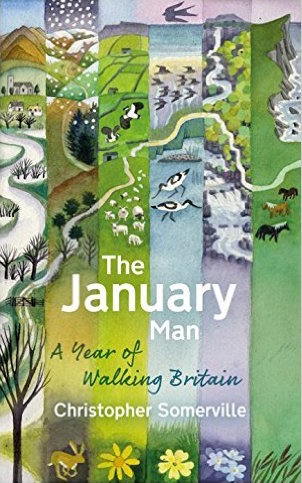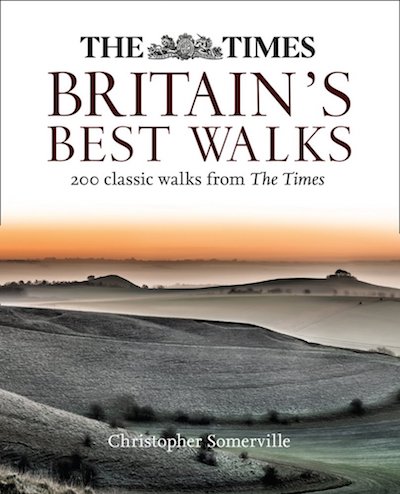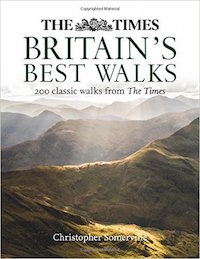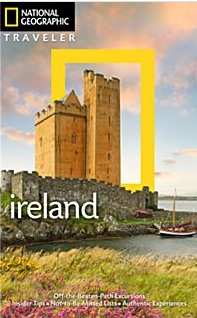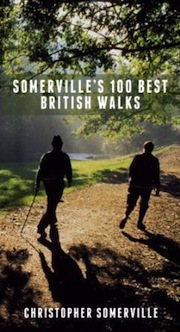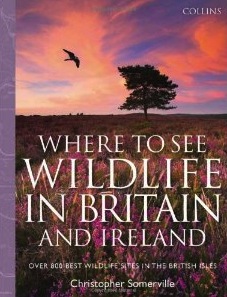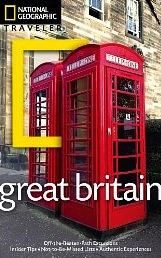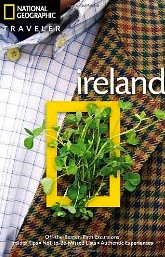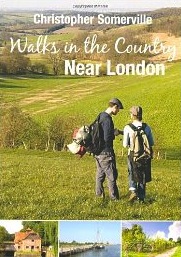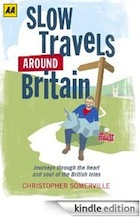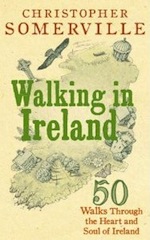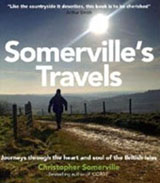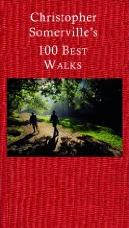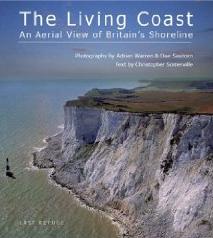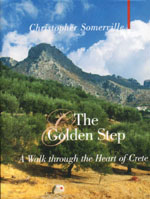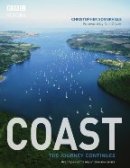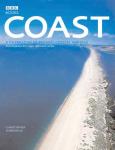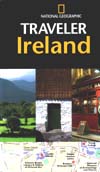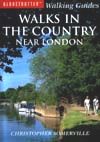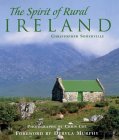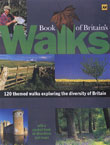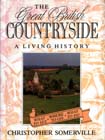

































Facebook Like:

1. St Ives and Zennor, Cornwall
11 miles; OS Explorer 102
The outward leg from St Ives is one of the finest stretches of the South West Coast Path, a beautiful westward run of heath-covered headlands, granite cliffs and rocky coves where seals bob and fulmars wheel. Wild thyme lends a bitter-sweet fragrance to the grassy banks. Opposite the village of Zennor the coast path swings out onto Gurnard’s Head, a wild dragon-headed promontory with sheer cliffs that fall to sea-sculpted caves where the waves crash and boom. At Zennor, St Senara’s Church is home to the mermaid of Zennor, stiff and stark after 600 years as a carved bench end.
The homeward path follows the old Corpse Road footpath through the fields. This former route for bodies to be borne to Christian burial passes through a farming landscape that remembers its Bronze Age origins in the tiny size of the fields and the immense sturdiness and thickness of their walls. Each field is linked to its neighbour by a Cornish stile, a row of four or five well-spaced bars of granite set over a pit. It forms a grid barrier that baffles cattle and sheep – but not the sagacious local pigs, apparently.
Start/finish: Porthmeor Beach, St. Ives, TR26 1TG, (OS ref SW 516408)
Directions: SW Coast Path to Zennor; return by field path via Tremedda, Tregerthen and Wicca to Boscubben (473395); then Trevessa (481396), Trevega Wartha, Trevalgan (489402) and Trowan (494403) to Venton Vision (506407) and St Ives.
2. Corton Denham and Cadbury Castle, Somerset
7½ miles; OS Explorer 129
Not just a stroll through the green lanes and hills of south Somerset, this is a walk in the ghostly presence of King Arthur. The Macmillan Way lies just west of Corton Denham, and takes a northward course with an enormous view over a wooded vale leading to Glastonbury Tor, the summit tower a tiny pimple at the apex. The long line of the Mendip Hills closes the vista, with the green wedge of Brent Knoll 25 miles away in the west.
A clockwise loop around the mellow stone houses of Sutton Montis, and you follow the old greenway of Folly Lane across the medieval ridge-and-furrow to South Cadbury, tucked in the lee of Cadbury Castle’s great ramparted hill fort. A stony cart track climbs through the Iron Age ramparts to the wide, sloping summit of the hill. Did King Arthur, the ‘once-and-future King’, ever feast here with his warriors and his treacherous queen? An excavation in 1966-70 brought to light the foundations of a great aisled feasting hall, built in the early Dark Ages at the crown of Cadbury Castle. And spectral riders still sally forth from the fort at midnight, local stories say, their horses shod with silver that flashes in the starlight.
Start/finish: Corton Denham, Somerset DT9 4LR (OS ref ST 635225)
Directions: From Middle Ridge Lane (opposite church) footpath west to Corton Ridge (626224). North (Monarch’s Way) for 1 mile to road at Kember’s Hill (629241). Footpath through Sutton Montis to meet Leland Trail/LT (620252). LT to South Cadbury; right (632256), then right again, up to Cadbury Castle. Return to road; right; 100m past Crang’s Lane, path (633249, yellow arrow/YA) south to Whitcombe Farm and road (631237). Path below Corton Hill (‘Corton Denham’) back to Corton Denham.
3. Kingley Vale, near East Ashling, West Sussex
3 miles; OS Explorer OL8
Every summer I look forward to a lazy walk in warm sunshine, up the track from West Stoke car park and round the waymarked circuit of Kingley Vale National Nature Reserve. It takes all afternoon to stroll these three miles, because Kingley Vale’s preserved chalk grassland is made for lingering and looking. It’s composed more of flowering plants than of grasses, a tight-packed sward rich in thyme and marjoram, with scabious, harebells, pink centaury, bird’s foot trefoil and dozens more species attracting clouds of blues, coppers, argus, browns and other butterflies.
By contrast, the sombre yew grove that colonises the steep east-facing slope on the west edge of the reserve seems barren of all life except that of its ancient occupants. This great grove, protected on its chalk slope, is a rare survival. The yew crowns are a green so dark it is almost black, but once in among them you find that their limbs are pale, brittle and twisted, like dried muscles. How old are these sombre, knotted trees? At least 500 years, but some of them are old enough to have seen druidical worship. Some could already have been standing many centuries at Kingley Vale when the upstart Romans came invading.
Start/finish: West Stoke car park (OS ref SU 825088), near East Ashling on B2178 near Chichester.
Directions: Through kissing gate; follow track north to kissing gate into NNR. Bear left on footpath just inside fence; follow uphill for 1/3 mile to yew grove on right (819105). Continue along waymarked path to make clockwise circuit of reserve.
4. Alfriston, Jevington and the South Downs, East Sussex
8½ miles; OS Explorer 123
Some walks just grab you so hard that you know you’ll be back to enjoy them again and again. I can never get enough of this beautiful circuit of East Sussex villages in the shadow of the South Downs.
Alfriston’s houses and inns are rich in carved timbers. On a sunny day the village lies in bright brick reds, acid greens and indigos. A flinty track runs east to pass below the Long Man of Wilmington, an ancient giant two hundred feet tall, his outline cut out of a chalk downland slope. A rutted woodland path leads on to Folkington, where pioneer celebrity chef Elizabeth David lies in the churchyard under a gravestone carved with aubergines, peppers and cloves of garlic. Then you head south on a snaking track to Jevington with its thousand-year-old church tower built like a fortress against Viking marauders. A Saxon Christ adorns the wall, victorious over a puny, wriggling serpent.
Crossing the downs on the homeward stretch, one marvels at how a corner of countryside with such a vigorous and bloody history – Viking and French raids, coastguard battles with the smuggling gangs, Second World War bombs and doodlebugs – has settled to a tranquillity as smooth as the applewood smoke rising from Alfriston’s chimneys into the blue Sussex sky.
Start/finish: Alfriston, East Sussex BN26 5UQ (OS ref TQ 521033)
Directions: Downland track east via Long Man of Wilmington (542034); Wealdway path via The Holt (551040) and Folkington church (559038) to St Andrew’s Church, Jevington (562015). South Downs Way west to Holt Brow (553019); Lullington Heath NNR via Winchester’s Pond (540020) to Litlington (523021). Left past Litlington church; just before Plough & Harrow PH, right (523017 – ‘Vanguard Way’) to Cuckmere River; right to Alfriston.
5. Latimer, Chenies and the Chess Valley, Bucks/Herts border
7 miles; OS Explorer 172
Of all the gorgeous walks within easy reach of London, this one never palls in any season. From Chalfont & Latimer tube station (Metropolitan line), Bedford Avenue and Chenies Avenue lead north into West Wood, where the Chess Valley Walk trail descends to cross the River Chess in its beautiful green valley under the neat estate village of Latimer. From here it’s a clockwise circuit, following the Chess Valley Walk above the shallow, winding river. ‘Mr William Liberty of Chorleywood, nonconformist brickmaker’ (died 1777), having refused a church burial, lies by the field path with his wife Alice in a brick-built tomb. Further on, you can buy a peppery, crunchy bunch of watercress from Tyler’s farm, before reaching Church End where astonishing 14th-century paintings adorn the village church.
Back across the River Chess, the Chiltern Way leads across lush wet pastures, then through woods of hornbeam and cherry to Chenies village. History lies thick on the great Tudor mansion of Chenies; and in the adjacent church generations of Russells, Dukes and Duchesses of Bedford, lie entombed. From here you follow a ridge path back to Chalfont, with glorious views across the Chess Valley.
Start/finish: Chalfont & Latimer tube station, Bucks, HP7 9PR (OS ref SU 997975)
Directions: Bedford Avenue; Chenies Avenue (996976); at Beechwood Avenue (996981), ahead into West Wood. Follow Chess Valley Walk downhill to leave wood and cross road (999985), then river (000986). Right to cross road (004987; ‘Chess Valley Walk’/CVW, fish waymark). Follow CVW for 1¾ miles to road (031990); on Sarratt Church (039984). Chiltern Way west to road (021980) and Chenies (016983); west via Walk Wood and West Wood to return to station.
6. Dunwich and Dingle Marshes, Suffolk
6¾ miles; OS Explorer 231
A perfect encapsulation of the moody magnetism of the Suffolk Coast. Dunwich was a great trading port whose churches, hospitals, squares and houses were utterly consumed by the sea. A path leads up to the solitary curly-topped headstone of Jacob Forster, still clinging to the cliff edge, the last relic of the church of All Saints that toppled to the beach in 1922.
The Suffolk Coast & Heaths Path runs north through copses of old oak and pine trees. Grazing marshes, dotted with black cattle, stretch away towards the long straight bar of the sea wall. Soon you are in among the great reedbeds of Westwood Marshes where tiny bearded tits bounce and flit through the reeds, trailing their long tails low behind them and emitting pinging noises like overstretched wire fences. There’s no view whatsoever of the nearby sea, just a haunting feeling of country walked by many, but known by very few.
Once across the Dunwich River, you top the shingle bank. Here is an instant switch of view and perspective, out over a slate grey sea and round the curve of the bay, as you follow the pebbly beach back to Dunwich under its sloping cliff.
Start/finish: Dunwich car park, Suffolk, IP17 3EN (OS ref TM 478706)
Directions: Ship Inn – St James’s Church and Leper Hospital (475706) – Bridge Farm (474707; ‘Suffolk Coast Path’/SCP). Little Dingle (475717) – Dingle Stone House (476724) to Great Dingle Farm (483730). Follow SCP arrows through Westwood Marshes to footbridge (495742, SCP) to shingle bank; right to Dunwich.
7. Lakenheath Fen, Norfolk/Suffolk border
7¾ miles; OS Explorer 228
All the famed dampness and richness of unspoilt Fenland are perfectly caught in this walk around Lakenheath Fen nature reserve. The path from Hockwold-cum-Wilton is by way of Church Lane, Moor Drove and the sluices and banks of the Little Ouse River, heading west into the reserve via its excellent Visitor Centre.
It’s hard to credit that this green and fertile fen landscape was intensively farmed carrot fields not so long ago. Dug out, planted with fen vegetation and provided with plenty of water, it has burst into life. Various waymarked trails lead through the reserve, with the Main Circular Trail as the spine. Otters thrive here, bitterns boom in spring among the reedbeds, kingfishers and water voles scud about. Cranes are nesting for the first time in centuries. Marsh harriers hunt the reedbeds and ditches on long dark wings, sailing the air with effortless mastery. Along the trail, detours lead to hides with privilege viewpoints over meres where great crested grebes perform their elaborate courtship rituals.
At Joist Fen the walk bears right to follow the bank of the Little Ouse back to Hockwold. A bunch of lucky cattle graze here, up to their chins in the lushest grass in East Anglia.
Start/finish: Hockwold-cum-Wilton, Norfolk IP26 4NB (OS ref TL 735880)
Directions: Church Lane; Moor Drove East (734876); cross sluice (731870); right along riverbank to B1112 (724868). Left; in 300m, right to Lakenheath Fen Nature Reserve Visitor Centre (718863). Follow Main Circular Trail/MCT (white arrows/WA) clockwise as far as Little Ouse river bank (698861). Right (Hereward Way) for 2 miles back to B1112 (724866). Left (take care!); retrace steps to Hockwold.
8. Purton and the Ships Graveyard, Gloucestershire
6½ miles; OS Explorer OL14
The River Severn comes down through west Gloucestershire in great wide loops, slowly broadening into its estuary. Boats that ply the river are few and far between these days, and the skeletons of some old Severn craft are one of the features of this fascinating walk.
From Brookend near Sharpness, field paths run north across the swell of the land to the tiny village of Purton on the edge of a big bend in the Severn. Through the village runs the long silver streak of the Gloucester & Sharpness Canal, dug across country at the turn of the 19th century to bypass some of the most difficult and dangerous bends of the river.
Dozens of old coal and cargo boats were brought here to Purton at the end of their working lives and rammed into the soft mud of the Severn’s east bank, to stiffen it and protect the adjacent canal against the fierce sweep of the tides. It’s a poignant walk back to Sharpness among the ribs and sternposts, tillers and rudders of these former river queens. And Sharpness itself is a fascinating rarity, a working river port where cranes clank as they unload cement and fertiliser from rusty old sea-going boats.
Start/finish: Brookend, Sharpness GL13 9SF (OS ref SO 684021)
Directions: Footpath north across fields for 1½ miles to Purton (682042). Cross canal; past Berkeley Arms PH (691045). Riverside path joins canal towpath (687044). Detour right along riverbank through Ships Graveyard, then canal towpath into Sharpness. Cross canal (670030); ‘Severn Way’ up steps; ahead past Dockers’ Club (671029) to road. Left across left-hand of 2 swing bridges (673029). Ahead to road (677026); right (‘Sharpness’). Left beside Village Hall (674021 – fingerpost); paths via Buckett’s Hill Farm to Brookend.
9. White Horse and Wayland’s Smithy, Oxfordshire
6 miles; OS Explorer 170
If you want to savour the deep history and mythology of these islands, you can’t do better than tramp the ancient Ridgeway across the chalk downs of Oxfordshire. Start from Woolstone, tucked in below the hills, and follow the field paths southwest via Knighton and Compton Beauchamp. From here you glimpse the White Horse that was cut out of the chalk turf high above some 3,000 years ago, still beautiful and enigmatic in her disjointed, futuristic form.
From Odstone Farm a sunken track leads uphill to reach the Ridgeway, already ancient when the White Horse was made, a rutted upland thoroughfare curving with the crest of the downs. Turning east along the Ridgeway you soon come to a remarkable monument, the great Neolithic long barrow of Wayland’s Smithy, its huge portal stones and grassy mound surrounded by a ring of tall old beeches. Wayland was a blacksmith in Norse mythology, and local tales say he’ll shoe your horse if you leave it overnight along with a silver coin. You don’t have to be a New Age devotee to sense the power and presence of the far past here.
A long mile along the Ridgeway brings you to the White Horse herself, and a descent down a steep breast of downland called The Manger to reach Woolstone.
Start/finish: Woolstone, Faringdon, Oxfordshire SN7 7QL (OS ref SU 293878)
Directions: cross Hardwell Lane – Compton House – just before Odstone Farm, left up Odstone Hill – left along Ridgeway. Wayland’s Smithy – detour to Uffington Castle and White Horse – continue on Ridgeway for ½ mile – left (308864) – Britchcombe Farm – cross B4507. On for ½ mile – left (308880) – path to Woolstone.
10. The Stiperstones, Shropshire
5 miles; OS Explorer 216
The Stiperstones stand stark and jagged. These quartzite outcrops rise from a heathery ridge at the northern end of the Long Mynd, Shropshire’s great whaleback of a hill. They are the focus of some of the most bizarre folk tales and superstitions in these islands.
The Shropshire Way leads up and past the Stones, heading north across heather moorland where cranberries make scarlet splashes of colour. This upland heath is carefully preserved for its wildlife value, with cowberry and crowberry among the great swathes of purple heather. You pass Cranberry Rock and Manstone Rock to reach the largest outcrop, the Devil’s Chair. When mist envelops the Stones, the Devil is in his Chair, waiting for Old England to sink beneath the earth. Impossible to tell how all these Gothic notions gained ground, but they lend the Stiperstones a very peculiar aura.
Views from the ridge are superb over the Shropshire hills and woods, east to the long green bar of Wenlock Edge, west as far as the borderlands of Wales. From Shepherd Rock a steep grassy path leaves the hill, descending steeply Past old lead-mine workings to Stiperstones village far below. From here a lower track leads back below the Stones, hard-edged and ominous along the eastern skyline.
Start/finish: Bog Centre car park, Stiperstones (OS ref SO 355979)
Directions: Shropshire Way from road (362976) past Cranberry Rock (365981), Manstone Rock (367986), Devil’s Chair (368991). From cairn just before Shepherd’s Rock (374000), steep descent to Stiperstones village (363004) and Stiperstones Inn. Return to Bog Centre via 361002, 359999, 361996 and lane parallel to the Stiperstones.
11. Kinder Edge, Derbyshire
9 miles; OS Explorer OL1
A hugely popular walk, and deservedly so. This is the ultimate memorial hike, commemorating the crowd of left-wing, working class youngsters from the industrial sprawls of Manchester and Sheffield who in 1932 initiated an incursion known as the Mass Trespass onto the privately owned moorland of Kinder. Some were imprisoned, others vilified. Without the impetus of their bold action, we wouldn’t have the right to roam over wild upland country that we enjoy today.
From Bowden Bridge near Hayfield you head north above Kinder Reservoir, looking across the valley to the long upstanding line of crags that form Kinder Edge. A steep climb beside the beck in rocky William Clough leads to the peat bogs of Ashop Head, where gamekeepers with sticks tried and failed to stem the mass trespass of 1932.
From here it’s a long and exhilarating stride south along the Pennine Way at the very edge of the gritstone escarpment, with magnificent views to Manchester and the distant hills of Wales. Across the watersplash of Kinder Downfall, and on to where the homeward path turns west off the Pennine Way at ancient Edale Cross and starts its descent down the long, long lane to Bowden Bridge.
Start/finish: Bowden Bridge car park, Hayfield, Derbyshire, SK22 2LH approx (OS ref SK 049870)
Directions: Continue up road. At Booth Sheepwash cross river (051876); in 100m, take path (yellow arrow). In 250m, left to reservoir gates; up cobbled bridleway on left. In 300m, left (054882, metal ‘bridleway’ sign) up to gate. Right (‘Snake Inn’) for 1½ miles (White Brow, William’s Clough) up to Ashop Head (065900). Right on Pennine Way along Kinder Edge for 3½ miles. Beyond Edale Rocks where PW turns left for Edale, right (081861) through gate; lane for 2¾ miles down to Kinder Road and car park.
12. Muker and Keld, Swaledale, N. Yorkshire
6½ miles; OS Explorer OL30
A classic walk in the Yorkshire Dales from the picture-book village of Muker. An old road, stone-surfaced and stone-walled, leads up the sloping fellsides. It heads northwest through sheep pastures to skirt the big open rise of Kisdon Hill before dropping gently down to Skeb Skeugh ford and the huddle of grey stone houses at Keld. I remember, many years ago, stumbling into Keld after a miserable day of rain and mist on the Pennine Way, and the bliss of a cup of tea and a pair of dry socks there.
From Keld the homeward path crosses the River Swale at the hissing waterfall of East Gill Force. A little further on and you pass tumbledown Crackpot Hall, undermined by subsidence in the lead mines of Swinner Gill. This is a sombre spot, resonant with history, a maze of spoil heaps, arched stone mine levels, and the precarious hillside trods or tracks of the miners.
It’s a remarkable contrast, walking south from these dolorous ruins above the fast-rushing Swale, down into the delightful green lushness of Swaledale and the stone-walled sheep pastures around Muker.
Start/finish: Muker, Richmond, N Yorks DL11 6QG (OS ref SO 910979)
Directions: Up lane by Muker Literary Institute. Forward; up right side of Grange Farm (‘footpath Keld’). Follow lane; then ‘Bridleway Keld’ (909982) up walled lane for ½ mile. Cross Pennine Way/PW and on (903986; ‘Keld 2 miles’) along bridleway to ford and B6270 (892006). Right into Keld. Right down lane (893012; ‘footpath Muker’). In 300 yards, left downhill (‘PW’) across River Swale, up to waterfall. Right (896011; ‘bridleway’) for ½ mile. 150m past stone barn, left (904009) to Crackpot Hall; path into Swinner Gill, to fingerpost (911012) opposite mine buildings. Sharp right (‘Muker’) to ford beck (911008); follow track down Swaledale for 1 mile. Cross Swale (910986); meadow path to Muker.
13. Cronkley Fell, Upper Teesdale, Durham Dales
7 miles; OS Explorer OL31
For its wonderful flowers and birds, this is my favourite springtime walk of all. You set off from Forest-in-Teesdale to cross the River Tees near Cronkley Farm. The peat-brown Tees comes charging down its rocky bed, roaring loudly and rumbling the stones as it races by. The valley meadows are full of nesting birds – lapwing, redshank and curlew – each with its own haunting cry, the very voice of spring in this wild place. Snipe go rocketing about the sky, divebombing with a drumming rattle of outspread tail feathers.
From Cronkley Farm the Pennine Way climbs southward to meet the old lead-miners’ road called the Green Trod. Turning west along this grassy broad track, you are soon in flowery heaven up on the nape of Cronkley Fell. Tiny white flowers of lead-resistant spring sandwort flourish in abandoned mine workings. Higher up you find the real jewels of this rugged, enchanting valley – tiny, delicate Teesdale violets, miniature bird’s-eye primroses as shocking pink as a starlet’s fingernails, and royal blue trumpets of spring gentians.
A picnic pause to contemplate the forward view over the basalt crags of Falcon Clints, and you descend through pungent-smelling juniper bushes to turn for home along the brawling Tees once more.
Start/finish: Forest-in-Teesdale car park, near Langdon Beck, Co. Durham DL12 0HA (OS ref NY 867298)
Directions: Right along B6277; in 100m, left down farm track via Wat Garth, to cross River Tees by Cronkley Bridge (862294). Follow Pennine Way (PW) past Cronkley Farm, up rocky slope of High Crag and on along paved track. In 500m, left across stile (861283). PW bears left, but continue ahead uphill by fence. Through kissing gate (861281); in 100m, right along wide grassy trackway. Follow it for 2 miles west across Cronkley Fell (occasional cairns). Descend at Man Gate to River Tees (830283); right along river for 2½ miles. At High House barn (857294), half-left across pasture to Cronkley Bridge; return to car park.
14. Mellbreak, Mosedale and Crummock Water, Lake District
6 miles; OS Explorer OL4
This delectable circuit offers all the delights of Lakeland in one go – a steep (but not too steep) fell, a little-visited side dale, and a gorgeous lakeside stroll back to one of the best pubs in Cumbria.
From the Kirkstile Inn a country road runs south. A little way past Kirkgate Farm a path heads off, straight up the northern face of Mellbreak. The fell looks tremendously steep; but in fact the path is clear once you’re on it, and with a bit of zigzagging and a modicum of hard breathing you’re on the top of this rugged mini-mountain almost before you know it. The view is one of the finest in the Lake District – north across the Solway Firth to the distant hills of Galloway, east to the pink screes of Grasmoor across Crummock Water, south to the magnificent humpy spine of Red Pike, High Stile and High Crag.
Gaze your fill; then drop down west into green and silent Mosedale, boggy and orchid-spattered. ‘Dreary,’ opined Alfred Wainwright. For once, the Master was wrong. Head south along Mosedale, round the end of Mellbreak, and finish with a glorious stroll north up the side of Crummock Water with a feast of fells all round.
Start/finish: Kirkstile Inn, Loweswater, Cumbria CA13 0RU (OS ref NY 141209)
Directions: From Kirkstile Inn, south on lane past Kirkgate Farm for ½ mile. At gate (139202), up through trees, then to foot of scree (141199). Bear left; zigzag steeply up to Mellbreak’s northern summit (143195). Forward for 500m to dip and fork in path (145190); bear right, steeply down to path in Mosedale (141186). Left (south) for ¾ mile to gate in fence (146175); down to track by Black Beck (146174); left (east) to Crummock Water. Left (north) to north end of lake. Bear left (149197) to wall (148199); follow to Highpark Farm (145202). On to cross Park Bridge (145205); fork left to Kirkstile Inn.
15. Holy Island, Northumberland
10 miles, OS Explorer 340
NB Causeway and Pilgrim Path are impassable 2½ hours either side of high tide. Tide times posted by causeway; also at lindisfarne.org.uk
Pilgrims have been crossing the sands for a thousand years to reach Lindisfarne or Holy Island, monastic retreat of the 7th century hermit bishop St Cuthbert. The pilgrim path to Lindisfarne, marked out by tall poles, diverges from the causeway road to cross the murky sands. It’s a squelching walk, windy and redolent of salt mud and seaweed, passing a long-legged refuge tower for unwary travellers caught by the incoming tide. Often you can hear the eerie singing of seals on the distant sands.
Once ashore on Holy Island, the little village with its great red sandstone monastic ruins is fascinating to explore. Down off the southwest corner lies tiny, tidal Hobthrush Island, with the sparse remains of an ancient chapel marking the site of the cell where Cuthbert sought even greater privacy.
A circular walk round Holy Island by way of Lindisfarne Castle on its dolerite crag and the nearby garden laid out by Gertrude Jekyll, and then back along the pilgrim path to the mainland, savouring the solitude of this vast expanse of tidal sand under enormous skies.
Start/finish: Holy Island causeway car park, Northumberland (OS ref NU079427)
Directions: Follow sands route (post markers) to Holy Island. Right to village and monastery. Walk anti-clockwise round island: harbour, castle, Gertrude Jekyll’s Garden (136419), The Lough, path west beside dunes. At gate by NNR notice (129433), left down track to village, or ahead for ½ mile, then left (122433) to causeway and sands route.
16. Worm’s Head, Gower Peninsula, South Wales
4 miles there-and-back; OS Explorer 164
NB Causeway is accessible for 2½ hours either side of low tide. Tide times at tides.willyweather.co.uk. Please don’t venture as far as Outer Head between 1 March and 31 August – nesting birds!
Norsemen named Gower’s double-humped promontory ‘wurm’, meaning dragon or serpent, and Worm’s Head does resemble a massive green monster heading out to sea. This is a wildly exhilarating scramble, spiced by the knowledge that you have to get your tide timings right. If you don’t, you’re in good company – Dylan Thomas once got himself marooned here.
From the National Trust car park at the western tip of the Gower peninsula you follow the cliffs out to the rough and rugged causeway crossing. There are blennies and crabs in the rock pools, and canted blades of barnacle-encrusted rock to cross before you can scramble up onto Inner Head, the middle section of the promontory. A path leads among pink flowerheads of thrift to the square wave-cut arch of the Devil’s Bridge, across which you make your way (but not in nesting season) onto the furthest hummock, Outer Head. Here kittiwakes, fulmars, guillemots, razorbills and puffins fill air and sea with their cries, flights and incredible guano stink.
Start/finish: Rhossili car park, Gower (OS ref SS 415880)
Directions: Walk ahead past National Trust information centre, following track and descending to cross causeway. Follow path round south side of Inner Head, across Devil’s Bridge (389877), round south side of Low Neck, out to Outer Head.
17. Llyn Bochnant and Cwm Idwal, Snowdonia, North Wales
6½ miles; OS Explorer OL17
Cwm Idwal is justifiably one of the most popular spots in Snowdonia – a readily accessible, highly dramatic bowl of crags cradling the dark lake of Llyn Idwal. Just above in a hidden valley lies another lake, Llyn Bochlwyd, far less frequented, from which you descend into Cwm Idwal by a steep and beautiful path.
The trail starts from Cwm Idwal car park (on A5 between Capel Curig and Bethesda) up a stone-pitched track. After 400m you leave the crowds behind, forking left onto a path that climbs the steep chute of Nant Bochlwyd beside a tumbling stream. Up at the top under the grim crags of Glyder Fach lies Llyn Bochlwyd, in a silent hollow of bilberry and grass. A spot to sit and savour before skeltering down the precipitous path to Llyn Idwal far below. Look out hereabouts for the white bib and harsh rattling chirrup of the ring ouzel, a mountain blackbird rarely seen.
A path circles Llyn Idwal, running high up under the crags of Glyder Fawr. Among the big boulders here grows starry saxifrage, delicate and white, and the miniature green blooms of alpine lady’s mantle, a lovely carpet of mountain flowers.
Start/finish: Cwm Idwal car park, Nant Ffrancon, LL57 3LZ (OS ref SH 649603)
Directions: Up stone-pitched path at left side of Warden Centre. In 350m path bends right (652601); ahead here on stony track across bog; steeply up right side of Nant Bochlwyd to Llyn Bochlwyd (655594). Right (west) on path for 400m to saddle (652594); then steeply down to Llyn Idwal (647596). Left along lake. At south end take higher path (646593) slanting up to boulder field; take care fording torrent at 642589! At big 20-ft boulder (640589), go right down side of boulder; left across rocky grass to homeward path (640590), steep in places.
18. Creag Meagaidh NNR, Inverness-shire, Scotland
8½ miles; OS Explorer 401
A classic there-and-back walk among the Scottish mountains, rising up a flowery glen to a hidden corrie. If you’re longing for the day you can take a picnic out among the hills again, squirrel this splendid walk away in your wish list.
Creag Meagaidh National Nature Reserve car park lies on the A86 between Spean Bridge and Kinloch Laggan. A trail marked with otter symbols leads past buildings and up steps to a sign for ‘Coire Adair’, the start of the walk up the bow-shaped glen. At first the path runs among woods of young birch, alder and oak. The boggy hillsides are dotted with heath spotted orchids, the hair-like stems and bright blue flowers of insectivorous butterwort, and purple blooms of wood cranesbill.
Once beyond the trees, mountains hem you round, the Allt Coire Adair burn tumbles down its snaky bed, and the path rises gently across open moorland tufted with bog cotton. At the top of the glen you surmount the hummock of a glacial moraine, and a prospect opens down onto the little glassy lakelet of Lochan a’Choire under a curving wall of black cliffs, lonely, wild and utterly silent.
Start/finish: Creag Meagaidh NNR car park, PH20 1BX (OS ref NN 483873)
Directions: From car park follow red trail (otter symbol). In 500m pass to right of toilets/buildings (479876). Follow path on the level, then up steps; fork right at top (474879; ‘Coire Ardair’) on clear stony path for 3 miles to Lochan a’ Choire (439883). Return same way.
19. Hermaness, Isle of Unst, Shetland
5 miles; OS Explorer 470
One of the most dramatic springtime walks I know, and certainly one of the remotest, Hermaness is a place apart. This blunt headland forms the northernmost tip of the Isle of Unst, itself the most northerly island in Britain. You set out literally from the end of the road, climbing a well-marked path that circles round the headland. The first inhabitants you meet will be the bonxies or great skuas, big clumsy gull-like birds that defend their nests and fluffy chicks by screaming and flying at you – though a stick upheld will deflect them.
It’s a rugged welcome to Hermaness, but this is a rugged place of bog, tiny lochs and tremendously craggy cliffs. The dramatic showpiece suddenly appears as you breast the rise and look down over a line of enormous sea stacks, great canted blades of rock jutting out of the sea. Their sheer dark slopes are whitened by the tens of thousands of gulls, fulmars, kittiwakes and guillemots that circle restlessly far below. Rumblings, Vesta Skerry, Tipta Skerry, Muckle Flugga with its stumpy lighthouse, and the little round button of Out Stack – these are the full stops that top off the mighty travelogue of Britain.
Start/finish: The Ness parking place, Burrafirth, Isle of Unst (OS ref HP612147)
Directions: From Ness parking place at end of road, follow marked circular path (green-topped posts) round Hermaness. Allow 2-3 hours. Remote, windy, boggy and slippery underfoot: dress warm and dry; walking boots. Take great care on cliff edges. Bring binoculars and stick. Information leaflets in metal box at start of path. NB: Great Skua (‘bonxie’) dive-bombs during chick-rearing season, generally late May until July, coming close but rarely striking. To deter, hold stick above head. Please avoid Sothers Brecks nesting area, May-July.
20. Slieve Gullion, Co. Armagh, Northern Ireland
5 miles there-and-back; OSNI Discoverer 29; walkni.com
Slieve Gullion rises over South Armagh, a kingly mountain, a great volcanic plug that dominates the landscape for miles around. This is a mountain of myth and legend, with a sensational 100-mile view from the summit as a reward for the not-very-demanding climb.
From Slieve Gullion Forest Park car park (signposted on the Drumintee Road between Newry and Forkhill) there’s a well-walked trail (‘Ring of Gullion’ waymarks) rising in stages via forest roads and tracks, clockwise round the southern slopes of Slieve Gullion. In a couple of miles you bear right at an upper car park, a short steep upward puff that lands you on the south peak of the mountain.
The prospect is simply sublime. A great volcanic ridge of hills encircles the mountain, with views beyond as far as the Mourne Mountains, the Antrim hills, the billowy Sperrins, and the green and brown midland plain running south to the tiny silhouettes of the Wicklow Hills beyond Dublin, a hundred miles away.
Explore the Neolithic passage grave on the peak, then picnic by the Lake of Sorrows. But don’t touch the enchanted millstone that lies half-submerged there. It might bring forth the dreaded magical hag, the Cailleach Beara, and you wouldn’t want that.
Start/finish: Slieve Gullion Forest Park car park, Drumintee Road, Killeavy, Newry, Co. Armagh BT35 8SW (OS of NI ref J 040196)
Directions: From top left corner of car park, left up path through trees. In ¼ mile join Forest Drive (038191), up slope, then level, for ¼ mile to ‘Ring of Gullion Way’ post on left (035190). Right up drive, past metal barrier; left uphill for 1½ miles to car park (018200). Beyond picnic table, right at white post, steeply uphill. South Cairn (025203) – Lake of Sorrows – North Cairn (021211); then return.






























































































































